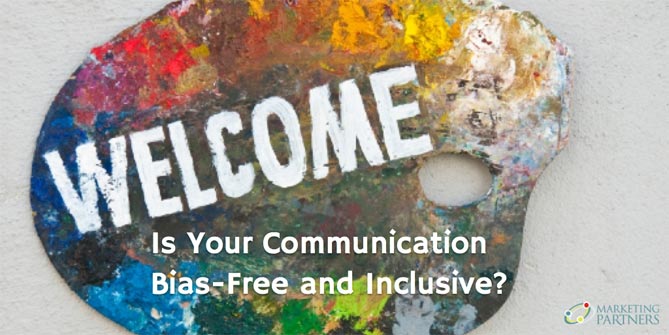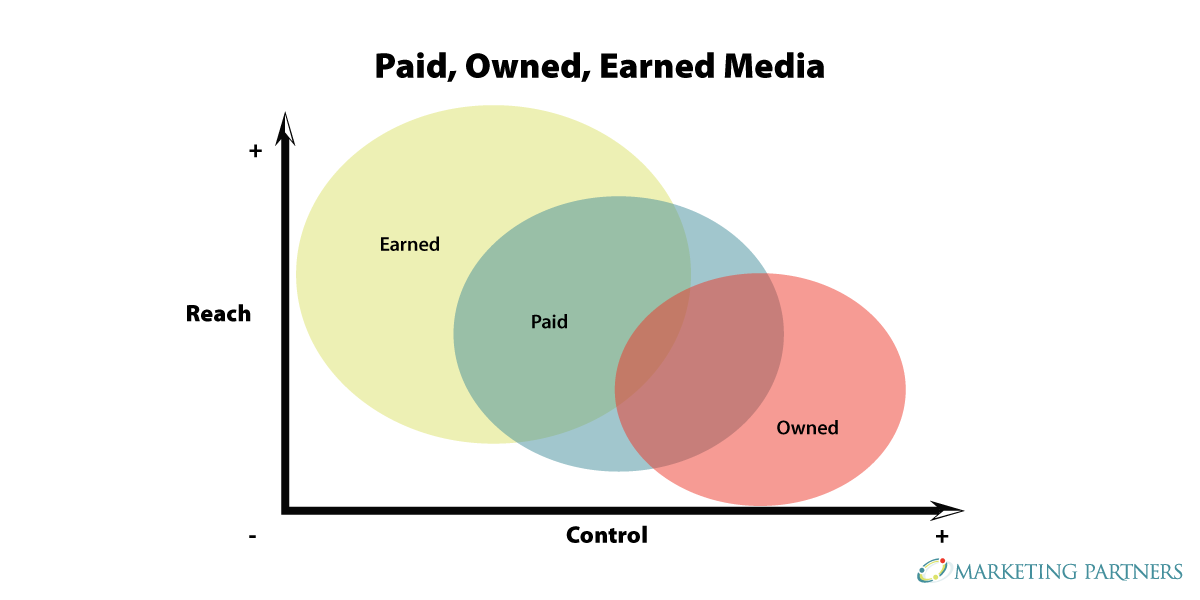How to Use Your Core Values to Inspire, Retain, and Energize Your Team
For the last few decades, but especially so in recent years, people are seeking out more than just an income from their place of employment. More...


Think your communication is always bias-free?
Think that you are equally respectful, inclusive and welcoming with a diverse range of people — those similar to you and those who are different — women, men and transgender people, different nationalities and ethnicities, LGBT community members, varying age groups and even socioeconomic levels?
Think again.
Chances are very high you’re wrong. Chances are very high there’s a gap between where you are now and where you need to be if you want effective bias-free and inclusive language.
We all like to think we’re objective, enlightened decision-makers, but thousands of research studies show otherwise.
I have biases; you have biases. The question is which ones, and what are we going to do about it?
We carry unconscious and implicit biases from a lifetime of exposure to cultural attitudes about age, gender, race, ethnicity, religion, social class, sexuality, disability status, and nationality.
The most effective tool available for testing your own unconscious bias is the Implicit Association Test (IAT), created and maintained by Project Implicit, a consortium made up of researchers from Harvard University, the University of Virginia, and the University of Washington. The IAT is a self-assessment of unconscious attitudes and associations created more than 15 years ago and has now been used by millions of people around the world. To take the IAT, without charge, go to https://implicit.harvard.edu/implicit/.
Another useful resource is UnderstandingPrejudice.org, a website maintained by the Social Psychology Network for students, teachers, and others interested in the causes and consequences of prejudice. (An abbreviated version of the Implicit Association Test is also available.)
Inclusive Language is visual or verbal communication that does not stereotype or demean people based on personal characteristics including gender, gender expression, race, ethnicity, economic background, ability/disability status, religion, sexual orientation, etc.
You or the writers on your team are likely to keep a dictionary, thesaurus and grammar style guide handy for your professional writing and speaking efforts. But do you run a ‘bias check’ on your communication? Do you have tools to help you check for stereotypes, discounting and bias?
At a minimum, you want to run a few quick checks yourself and ideally, have people with different backgrounds specifically review your work for bias. I used to count on an online tool, “After the Deadline” for this purpose but sadly, it’s no longer supported for Macs or WordPress. So in addition to the reference style guides listed below, I use MS Word to quickly check for the following:
The business case for diversity is clear: a diversified workforce and more women on your board of directors drives greater innovation and ultimately business growth. Harvard Business Review is but one of many to report on research confirming the benefits. The more diverse your customer base is, the more pressing the need for you to have a diverse business team.
And while a diverse workforce will enable you to gain insights to tackle business challenges or market opportunities, it will also help your recruitment efforts. Today’s professionals are looking to take their talents to companies that foster a culture of equality and inclusiveness.
When the hunt for top talent is especially key to business strategy, more and more companies are promoting their diversity and inclusion programs. They want to assure potential and existing employees that theirs is an environment where professionals are safe to be themselves, and opportunities for growth are made available regardless of gender, status or background.
Building diverse teams translates into value because differences in perspectives, thought processes and mindsets allow for distinct and deeper approaches to today’s business challenges.
You may not be there yet, but becoming aware of your own unconscious biases is an essential first step. Sharing resources, references and tools for bias-free and inclusive communication in your workplace and community will help too. Speak up if a friend or colleague uses an outdated or disparaging term.
Speak up if a friend or colleague uses an outdated or disparaging term. Your goal is to build an inclusive, welcoming community, and the first step toward that goal is an awareness of any bias in our daily language. The values of diversity, inclusion and equity are inextricably linked to social justice.
Language is an incredibly complex phenomenon that often reflects and affects our identities. There is wide diversity among us in usage and understanding of language based on our age, place of origin, culture and class, among other identities. We want a Vermont, and eventually a nation and a world where all of us feel comfortable and welcomed.
* Publication Manual of the American Psychological Association, Sixth Edition
“Use Respectful, Bias-Free Language” - The APA manual outlines important guidelines and specific examples for avoiding bias with respect to gender, race, disabilities, and more.
UNESCO’s Guidelines on Gender-Neutral Language [pdf]
The Handbook of Nonsexist Writing for writers, editors and speakers, by Casey Miller and Kate Swift
GLAAD Media Reference Guide - 9th Edition
@GLAAD -- on Twitter, Accelerating Acceptance for LGBT (lesbian, gay, bisexual and transgender)
Person-First Language for People with Disabilities, American Speech-Language-Hearing Association
Genderavenger.com –website and hashtag used to ensure women are always part of the public dialog. #GenderAvenger is used on Twitter, Google+, Facebook & Instagram when there’s an all-male panel at a business conference or public forum, or to call out a company when a product, ad or statement demeans women.
Jackson Katz in “Violence against women — it's a men's issue” [VIDEO], explains why and how powerful men must take a leadership role because other men cannot hear women on this issue.
#YesAllWomen – hashtag conversation focused on verbal and physical harassment
Why are white people expats when the rest of us are immigrants?, Guardian
The Journey From 'Colored' To 'Minorities' To 'People Of Color': Code Switch : NPR
Is There Gender Bias in Your Communication? Change Conversations
You're More Biased Than You Think. Even the most open-minded person harbors a lot of unconscious biases. Here's how to start recognizing and eliminating them. Fast Company
A Person Paper on Purity in Language, Douglas R. Hofstadter [Satire piece where the word “whites” is substituted for “men” throughout to illustrate the unacceptability of racism and racist language in an attempt to stimulate a similar revulsion at sexism and sexist language.]
How Unconscious Bias Affects Everything You Do. Ask yourself a few questions about your hidden biases before making big decisions. By Howard Ross in Fast Company
Yet Another Advantage To Having More Women On Boards, Washington Post
The Change Conversations blog is where changemakers find inspiration and insights on the power of mission-driven communication to create the change you want to see.
© 2009- to present, Marketing Partners, Inc. Content on the Change Conversations blog is licensed under a Creative Commons Attribution-Noncommercial-NoDerivs 3.0 United States License to share as much as you like. Please attribute to Change Conversations and link to ChangeConversations.
Creative Commons License may not apply to images used within posts and pages on this website. See hover-over or links for attribution associated with each image and licensing information.

For the last few decades, but especially so in recent years, people are seeking out more than just an income from their place of employment. More...

You know nonprofit organizations need websites just as small businesses do, but you may be surprised to learn nonprofit sites can be more complex and...

In today’s rapidly evolving media landscape, understanding where and how your story is told isn’t just strategic—it’s essential. How you communicate...